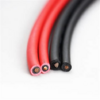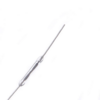Follow along with the video below to see how to install our site as a web app on your home screen.
Note: This feature may not be available in some browsers.
12v DC.
Voltstick type devices work on capacitance from an AC voltage in a cable.I am looking for an inexpensive relay that will be triggered by detecting a voltage in a cable. I am looking for something that will use the same tech as these very cheap voltage detecting pens,
 then the resultant magnetic field around the cable looks like this in cross section:
then the resultant magnetic field around the cable looks like this in cross section: positioned on either side with the appropriate orientation will be activated, and that can then switch whatever relay or SCR you need.
positioned on either side with the appropriate orientation will be activated, and that can then switch whatever relay or SCR you need.You were right, now corrected. (That's what comes from rushing to post having been called for dinner.)Also, that magnetic diagram appears to show current flowing the same way in each core rather than opposite, if the arrows are indications of field polarity??
Close differential reed switches go lower; but that's why I kept asking about the current draw.A reed switch needs a field strength of anything from typically 10 to 100 Ampere-Turns to operate.
